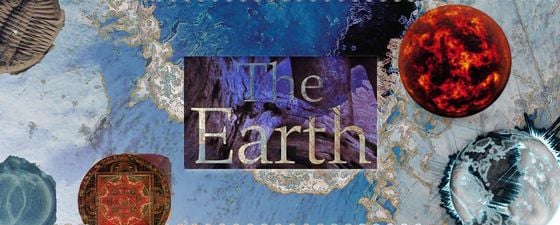As professionals we tend to become engaged in specialized fields and projects, and thus have less and less time to refresh our knowledge of general geology. Reading about the progress made and prospects of new findings in our science can also be fun.
There is something fascinating about being a college student (even if we may not have fully appreciated it at the time): the energy, an urge for learning our favorite subjects, and hopes for building a great future. Those of us working in the geological sciences and industries have experienced this ourselves in our college years. But, over time, we tend to become more engaged in our specialized fields and projects, and thus have less and less time to refresh our knowledge of general geology. Reading about the progress made, problems still remaining, and prospects of new findings in our science can also be fun. And if we find an informative and engaging book, it would be nice to give it to friends as a birthday and Christmas present. Here I introduce six popular geology books that may be of interest to the readers of GEO ExPro.
Reading the Rocks: The Autobiography of the Earth by Marcia Bjornerud (2006) is a good start. Written by an experienced geology professor (Bjornerud won the Association of Women Geoscientists 2011 Outstanding Educator Award), this book sums up the vast expanse of geology in a succinct style, and is thus a great review of the subject. The author’s choice of titles for the chapters and sections as well as the opening epigrams and quotes give a flavor of poetry to the book; for example, the chapter “The Tao of Earth” begins with this phrase from the Roman writer Plutarch: “For water continually dropping will wear hard rocks hollow” (similar to a phrase in The Tao Te Ching). The book is full of information and insight.
Why Geology Matters: Decoding the Past, Anticipating the Future by Doug Macdugall (2011) is another well-written book on important topics in geoscience including the geologic time scale, the earth’s interior, meteorite impacts, plate tectonics, earthquakes, mountain building processes, ice ages, climate warming, large volcanic eruptions, and so forth. Macdugall, an emeritus professor at Scripps Institution of Oceanography, University of California in San Diego, has published three other geology books – Nature’s Clocks, Frozen Earth, and A Short History of Planet Earth.
Richard Fortey’s Earth (2004) and Life (1997) are a must not only for the educated public but also for professional geologists. Highly detailed, with historical anecdotes, and written in a masterly prose, these two books take the reader on a tour of 20 geologically interesting places around the world (Earth) and through the four billion-year history of life on Earth (Life). Fortey, a renowned trilobite paleontologist at the Natural History Museum in London and 2007 president of the Geological Society of London, has won several awards and honorary doctorates for his writings on geology (see Making Geology Accessible, GEO ExPro Vol. 4, No. 3).
Here on Earth: A Natural History of the Planet by Tim Flannery (2010) is a lucid narrative of planet Earth and earth science. It contains 23 chapters on various topics, and builds a solid bridge between geology and the history of humans including their role in the environmental issues of our time. Flannery, an Australian paleontologist, has published a number of books on the ecological history of mammals and present-day climate change.
The Story of Earth: The First 4.5 Billion Years, From Stardust to Living Planet by Robert M. Hazen (2012) is a systematic discussion of Earth’s history from its birth in the bosom of the solar system to the near-future scenarios of our ever-changing planet. Based on recent research, in even chapters it examines the Precambrian history of Earth like no other popular geology books have covered; chapter 10 (‘Green Earth’) is the history of Earth from the Cambrian to the Recent. Coming from the pen of a master science writer, this is another must-read book. Hazen is a professor at George Mason University and a researcher in mineralogy at Carnegie Institution’s Geophysical Laboratory. Closely related to this book are his recordings (48 lectures, each 30 minutes), The Origin and Evolution of the Earth: From the Big Bang to the Future of Human Existence (The Great Courses, 2013).
There are, of course, a number of other fascinating geology books on the market; this list comes from my personal experience and my interest in reading science books.
For many of us, geoscience is a profession (whether in a teaching, research, laboratory, field, industrial, consulting or publishing environment) and probably a passion as well. Reading about geology can be enjoyable and entertaining – so what better gift than a good science book to give to friends and help promote the scientific literacy and public education that our society badly needs.
References
Reading the Rocks: The Autobiography of the Earth by Marcia Bjornerud, Basic Books (2006).
Why Geology Matters: Decoding the Past, Anticipating the Future by Doug Macdugall, University of California Press (2011)
Life: A Natural History of the First Four Billion Years of Life on Earth by Richard Fortey, HarperCollins (1997)
Earth: An Intimate History by Richard Fortey, HarperCollins (2004).
Here on Earth: A Natural History of the Planet by Tim Flannery, Grove Press/Atlantic Monthly Press (2010)
The Story of Earth: The First 4.5 Billion Years, From Stardust to Living Planet by Robert M. Hazen, Gildan Media, LLC (2012)





